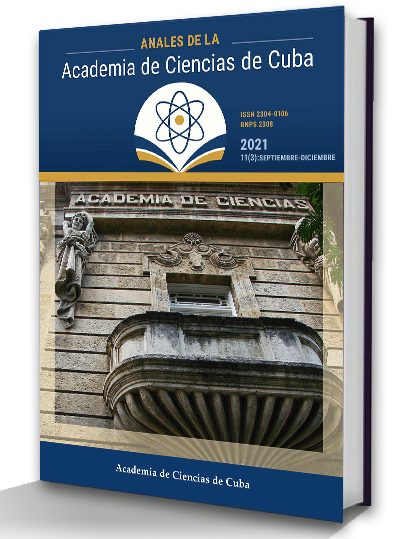Chitosan and its salts: national production, characterization and pharmaceutical applications
Keywords:
chitosan, chitosan salts, spray drying, emulsions, releaseAbstract
Introduction: The exoskeletons of crustaceans are sources of highly versatile biopolymers and solid wastes that pollute the environment. Objectives: Establish technological processes on an industrial scale to obtain chitosan and its salts, for biomedical applications.Methods: A mixing temperature of 80 ° C and a reaction temperature of 100 °C/15 double minutes were the best conditions for obtaining chitosan. Chitosan salts were obtained by the spray drying method, establishing an inlet temperature of 160 °C ± 5 °C and an outlet temperature of 100 °C ± 5 °C, from a solution of chitosan in acetic or lactic acid.
Results: The characterization confirmed the obtaining of chitosan with a degree of deacetylation greater than 70 % and an average molecular mass of 310,000 g/mol; as well as the formation of the salts of the biopolymer soluble in water. The homogeneity of the properties of the products in the scaled batches and the reproducibility of the established technological processes, under the conditions of the national industry, were demonstrated. The physical, chemical and microbiological stability of the biopolymer and its salts was verified for 24 months. Its emulsifying capacity was evaluated, achieving the stabilization of semisolid systems. The emulsified and water-soluble bases, using chitosan and chitosan acetate, showed adequate physical stability without interference in the release of the model drug, their application as stabilizing agents being demonstrated. Conclusions: three new raw materials of national production were obtained on an industrial scale with quality, to be used in the pharmaceutical industry.
Downloads
Downloads
Published
How to Cite
Issue
Section
License
The journal Anales de la Academia de Ciencias de Cuba protects copyright, and operates with a Creative Commons License 4.0 (Creative Commons Attribution-NonCommercial License 4.0). By publishing in it, authors allow themselves to copy, reproduce, distribute, publicly communicate their work and generate derivative works, as long as the original author is cited and acknowledged. They do not allow, however, the use of the original work for commercial or lucrative purposes.
The authors authorize the publication of their writings, retaining the authorship rights, and assigning and transferring to the magazine all the rights protected by the intellectual property laws that govern in Cuba, which imply editing to disseminate the work.
Authors may establish additional agreements for the non-exclusive distribution of the version of the work published in the journal (for example, placing it in an institutional repository or publishing it in a book), with recognition of having been first published in this journal.
To learn more, see https://creativecommons.org






